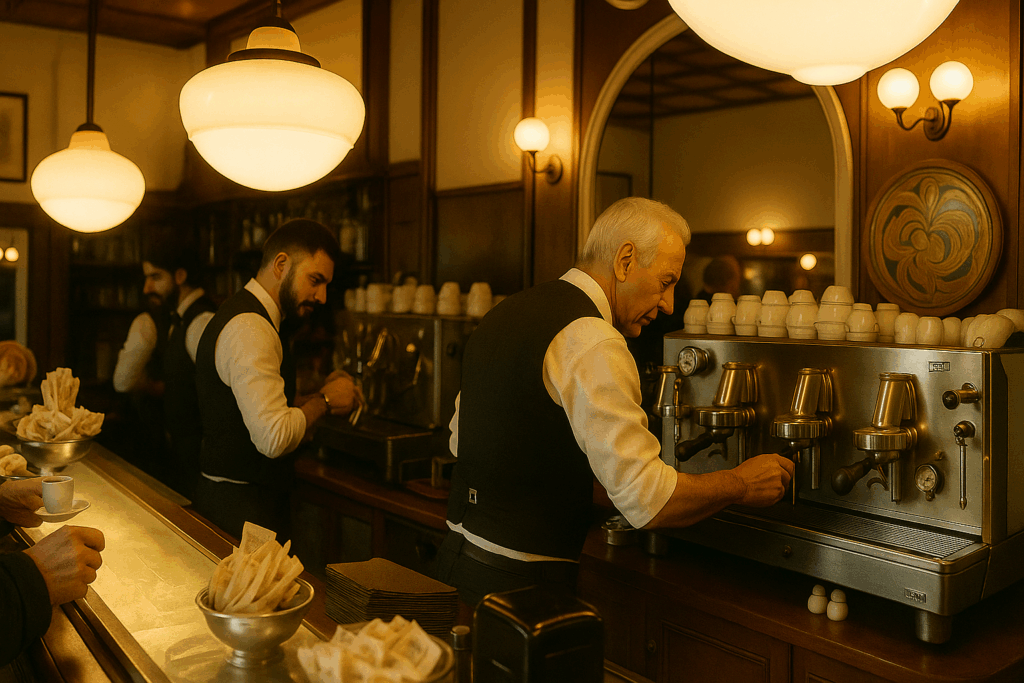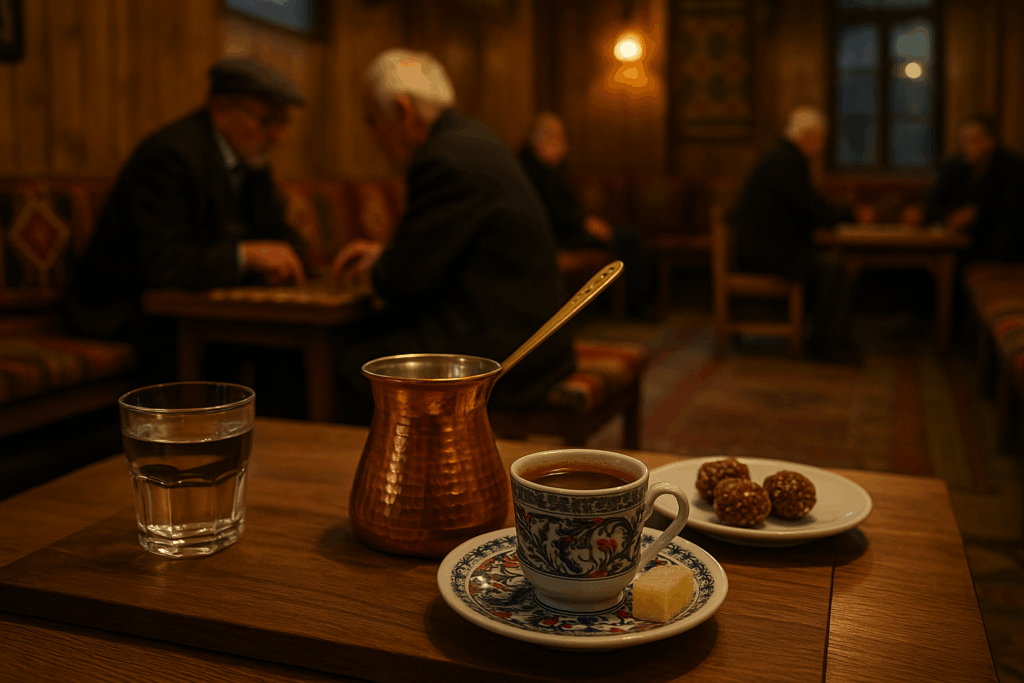Coffee Break Rituals: From Swedish Fika to Espresso Bars
Was your last coffee break just about caffeine—or did it offer something more? Around the world, people pause over coffee not just to boost energy, but to reset, reflect, and reconnect. These moments are shaped by culture as much as by flavor. In some places, coffee means quiet solitude. In others, it’s all about rhythm, social ritual, or even sacred ceremony.
From Sweden’s slow fika to Japan’s peaceful kissaten, from the fast-paced Italian espresso bar to the ancient Ethiopian coffee ceremony, there’s no single way to take a coffee break. But each of them reveals something essential about how we recharge. Let’s explore five coffee rituals from around the world—and what they might teach us about the art of pausing well.
Swedish Fika: The Joy of Slowing Down
In Sweden, fika isn’t just a casual coffee break—it’s a cherished daily ritual. It means intentionally stepping away from your tasks, slowing down, and sharing a cup of coffee with something sweet, often in the company of others. It’s not rushed. It’s not functional. It’s deeply human. There’s no checking emails while sipping. No gulping coffee on your way to the next meeting. Fika invites presence—and that presence is powerful.
Fika helps prevent burnout before it begins. It reinforces the idea that productivity isn’t just about pushing harder. Sometimes, it’s about stepping back. In many Scandinavian workplaces, fika is part of the schedule. Many see it not as lost time, but as an investment in wellbeing. And science is catching up—studies continue to show that social connection, regular breaks, and mental pauses all support better focus and long-term resilience.

Japanese Kissaten: A Mindful Coffee Break
While fika invites us to slow down in company, Japan’s coffee tradition takes a quieter route. Instead of conversation, it leans into stillness—into presence without words. In Japan, the traditional kissaten café offers a completely different kind of coffee break—quiet, deliberate, and deeply calming. These coffee shops offer retro charm, dim lighting, and a slower pace. No laptops, no takeaway cups—just hand-brewed coffee served in porcelain, often enjoyed in silence or with a book.
A typical kissaten break isn’t about grabbing a quick caffeine boost. It’s about creating a moment of calm and intentional pause. People often come alone, not to work or socialize, but to sit, reflect, and enjoy the craft of coffee without distraction. The kissaten experience is less about caffeine and more about atmosphere. It’s a space where time slows down, and the act of drinking coffee becomes almost meditative. It invites a different kind of reset—mental stillness, personal space, and quiet renewal. No wonder some researchers are exploring how coffee rituals may support emotional wellbeing.

Italian Espresso Bar: A Quick and Social Coffee Break
From the silence of a kissaten, we move to the lively hum of an Italian espresso bar, where energy flows fast—and so does the coffee. It’s a sudden shift in pace, and with it comes the Italian approach—quick, strong, and social. At a typical espresso bar, people stand rather than sit. They order a tiny shot of rich espresso, drink it in just a few sips, exchange a few friendly words, and move on. The whole ritual takes minutes, yet it’s still surprisingly energizing.
Unlike the drawn-out pause of fika or the solitary stillness of a kissaten, the Italian espresso break is about momentum. It’s a momentary pause that keeps you moving, while still honoring the coffee as something worth stopping for.

Turkish Kahvehane: Slow Coffee, Strong Connection
But what if a coffee break wasn’t short or silent—but long, social, and rooted in daily ritual? In Turkey, coffee is a reason to gather, to stay, and to talk. The traditional kahvehane—or coffeehouse—is more than a place to grab a drink. It’s a social institution, deeply rooted in history and daily life. These are not fast-paced cafés designed for takeaway. Instead, they’re meant for lingering, conversing, and connecting.
A kahvehane is where people gather to talk politics, play backgammon, read newspapers, and build community—often over small cups of strong, unfiltered Turkish coffee. The coffee is usually brewed slowly in a cezve (a small copper pot) and served with a glass of water. It’s not just about the drink itself but the environment it creates: warm, open, and rich with conversation.
Unlike the solitary calm of a kissaten or the speed of an espresso bar, the Turkish coffeehouse ritual encourages togetherness. It’s about showing up, staying present, and engaging with others. Here, a coffee break isn’t a pause from life—it’s part of living it.

Ethiopian Coffee Ceremony: Connection Through Time
And finally, we arrive where coffee itself began—Ethiopia. As one of the key coffee belt countries, Ethiopia has shaped not just flavor—but tradition. Here, the break transforms into something sacred: a ceremony of time, community, and deep connection. The traditional Ethiopian coffee ceremony is far from a quick sip—it’s a meaningful event that can last an hour or more, bringing people together in homes or communal spaces. Every step matters: from roasting green beans to hand-grinding and brewing, the process is deliberate, symbolic, and shared.
The ceremony typically includes three rounds of coffee, each with its own meaning. The first round, called abol, is meant to awaken the senses and start the conversation. The second round, tona, symbolizes deeper connection and is often when more serious discussions begin. The third, baraka, represents blessing and goodwill, sealing the communal experience. Each round is smaller and milder than the one before, inviting participants to linger, listen, and share. This progression reflects not just a way of drinking coffee, but a philosophy of presence, patience, and respect. The process is deliberate and unhurried. The air fills with the aroma of freshly roasted beans and shared stories.
This isn’t just a break—it’s an offering of hospitality, respect, and presence. Participating in an Ethiopian coffee ceremony is about slowing down and truly connecting—with the coffee, the moment, and the people around you. It shows how coffee, at its most meaningful, can be a vehicle for ritual, reflection, and community.

Rethinking the Coffee Break
Across all these traditions—from Sweden to Japan, from Italy to Turkey and Ethiopia—a common truth emerges: coffee is far more than just a drink. It’s how we pause, and why.
Fika encourages us to slow down and connect with others. Kissaten cafés remind us of the beauty of solitude. Espresso bars show that energy can be shared in moments. Turkish kahvehane invites us into presence and social grounding. And Ethiopia’s coffee ceremony reminds us to treat time—and each other—with reverence.
Together, they paint a picture of the coffee break not as a moment we steal from the day, but as one we give back to ourselves. So next time you reach for your cup, pause—just for a moment. Let it be more than a habit. Let it be a conscious act of care, a small ritual of presence in the middle of the day.

